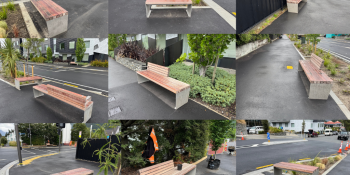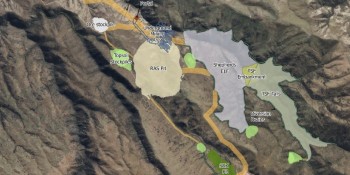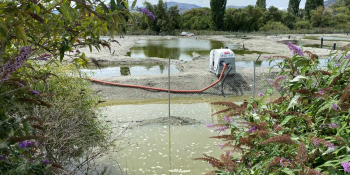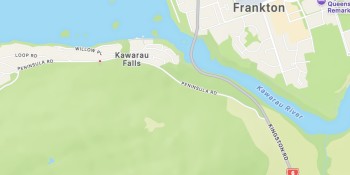QAC issues guidance to election candidates on airport expansion
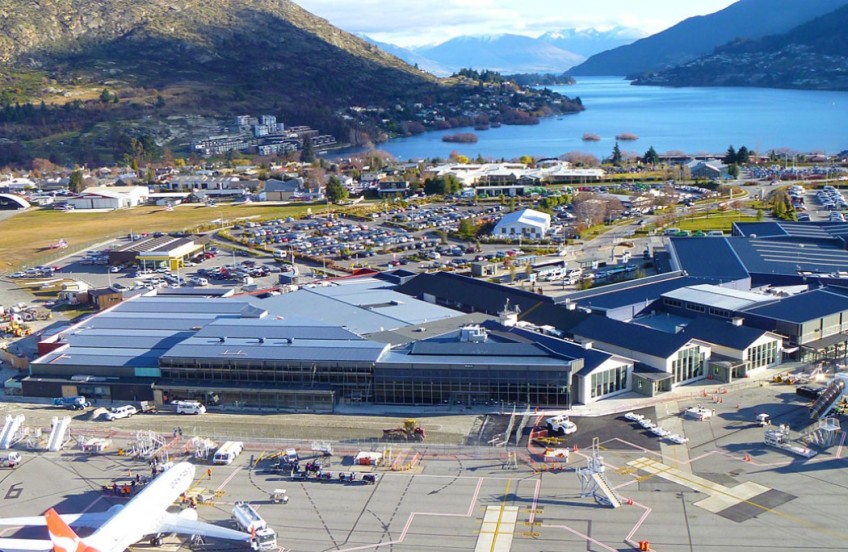
Just received - The Queenstown Airport Corporation has released information to local election candidates intended to clarify the QAC's position on airport expansion and community engagement. Here's the full, unedited text.
"Queenstown Airport Corporation (QAC) is a public transport infrastructure business and its role is defined by various pieces of legislation. It is considered an “airport authority” under the Airport Authorities Act 1966 and a “council-controlled trading organisation” (CCTO) under the Local Government Act 2002. It also is an “aerodrome operator” under Civil Aviation Rule Part 139 and the Civil Aviation Act 1990. Queenstown and Wanaka airports are lifeline utilities under the Civil Defence Emergency Management Act 2002. QAC has obligations and rights under each of these legislative instruments.
As an airport authority, QAC is required to operate and manage its airports as commercial undertakings, including carrying out improvements where necessary. It is also important to have long- term plans (also known as “master plans”) in place for each airport under its management.
As a CCTO, QAC plays an important role in supporting QLDC’s overarching requirement under the Local Government Act (Section 10) to provide good quality infrastructure to meet the current and future needs of the district. It does this by providing infrastructure to enable air services to the district for residents and visitors alike. This infrastructure is as important as other critical infrastructure, including roading, telecommunications, water, electric and other essential services.
QAC is responsible for maintaining the highest levels of health, safety and security as an aerodrome operator and is certified to operate by the Civil Aviation Authority. It also must ensure a high degree of business resilience, primarily through its infrastructure and response capability, in the event of a natural disaster or similar emergency. In addition, QAC is committed to ensuring that its operations are efficient and maintain a strong customer service standard.
Quick Facts:
-
More than 900 people work across Queenstown and Wanaka airports – representing approximately 80 businesses.
-
QAC is a profitable business and consistently returns dividends to its 2 shareholders - $6.2 million to QLDC in FY19 ($237 per ratepayer)
-
30-40% of people access the district by air and 60-70% by road - the only 2 modes of access.
-
Approximately 50% of annual passenger movements (arrivals and departures) at
Queenstown Airport relate to domestic (NZ-resident) travellers and 50% to international
travellers.
-
15-20% of annual passenger movements (arrivals and departures) at Queenstown Airport
relate to people directly going to or coming from Wanaka/the Upper Clutha.
For more information on QAC, please use the following link to access the FY19 Annual Profile:
https://www.queenstownairport.co.nz/assets/documents/Annual-Profile-2018-2019.pdf
1
Frequently Asked Questions:
What work needs to be done before QAC can share the proposed master plans for Queenstown and Wanaka airports with the community?
The district spatial planning process currently underway, led by QLDC in conjunction with the Government, will provide the overarching framework for growth in the district. QAC’s role is to provide air services infrastructure to support the needs of the district including the growth projected in the district spatial plan.
We welcome the recent announcement by QLDC that it will undertake independent economic and social impact assessments of future airport development on the district and its communities as part of the district spatial planning process. QAC has committed not to seek an expansion of the noise boundaries at Queenstown Airport or to introduce scheduled services at Wanaka Airport until QLDC undertakes this work.
QAC’s master plans must support and align with these important pieces of work so until this work is undertaken by QLDC, QAC will not be in position to complete and share the proposed airport master plans.
How long will it take for QAC to complete the proposed master plans for Queenstown and Wanaka airports?
This will depend on the time required for QLDC to undertake the economic and social impact assessments and to develop the district spatial plan. Once this work is completed, QAC will ensure that the proposed airport master plans reflect its outputs and findings before sharing them with the community for feedback.
What timeframe is QAC using for its master planning?
The timeframe QAC is using for its master planning is 25 years – out to 2045.
Will the community have an opportunity to give their views on the proposed master plans?
The draft master plans will be made public and the community will be invited to provide feedback and contribute to the process.
Will general aviation activities be included as part of the planning for both airports?
Last year Queenstown and Wanaka airports combined enabled more than 90,000 general aviation movements. General aviation is an important part of the history and future of both airports and will be included in the planning for both.
How is QAC demonstrating that it is committed to environmental sustainability?
QAC supports QLDC’s Draft Climate Action Plan (2019-2022) and is committed to doing its part to achieve the goals of net zero carbon emissions and net zero greenhouse gas emissions by 2050. QAC was an early adopter of Tourism Industry Aotearoa’s Tourism Sustainability Commitment and an advocate for Tourism New Zealand’s Tiaki Promise – Care for New Zealand initiative. QAC’s submission on QLDC’s Draft Climate Action Plan is attached.
Will Queenstown Airport be “capped” in terms of number of flights and passenger movements?
Queenstown Airport is constrained by various operating parameters, including its consented operating hours (6:00am-10:00pm), runway length (able to facilitate no larger than narrow- body/single aisle jet aircraft) and noise boundaries. Based on projected growth rates (currently moving at a slower pace than in recent years), it is anticipated that the noise boundaries will be reached within the next 2-3 years. At that point, no additional scheduled flights will be able to operate at the airport and the passenger movements will depend on capacity (the number of seats) and load factor (the number of seats filled).
What impact will innovation and new technology have on air noise boundaries?
As technology improves planes will become quieter and more fuel efficient. The specific time horizons for these innovations are unclear. However, QAC is working closely with its airline partners to encourage them to introduce their latest aircraft and ground services equipment technology at Queenstown Airport.
Can QAC just increase landing fees to make more profits?
The Airport Authorities Act 1966 provides for an airport company to set aeronautical charges for identified airport infrastructure and related activities defined as airfield, terminal and aircraft and cargo activities. The airport company is obligated to consult with its airline customers prior to setting the charges. There is also a legislative requirement for airport companies with revenue over $10 million per annum to consult on capital expenditure. QAC falls into this category of airports and is subject to an external audited annual information disclosure regime. There is also a structured approach as to how airport’s aeronautical activities are assessed under competition law.
For these reasons, an airport company like QAC cannot unilaterally increase its aeronautical charges to earn greater or excess profits from its aeronautical infrastructure and related activities.
Can air services be directed to Invercargill and Dunedin?
Airlines, not the airports, determine where air services are provided based on their individual commercial and operational considerations. The airports cannot control this and need to be mindful of their obligations under competition law. However, QAC has recently entered into a cooperative arrangement with Invercargill and Dunedin airports to explore and undertake joint initiatives in a number of areas including health and safety, environmental sustainability, operational excellence and supporting strategic regional tourism initiatives.
Do QAC’s board of directors all live in Auckland?
No. Three of the six directors have homes in Queenstown or Wanaka. Our chairperson Prue Flacks has owned a home in Queenstown for 20 years and has lived permanently in Queenstown since 2009. Norm Thompson has had a residential property in Queenstown for more than 20 years and lives most of the year in Queenstown. Michael Stiassny lives in Auckland and has a holiday home in Wanaka.
What influence does Auckland Airport have over QAC in its day-to-day business activities and long- term strategic planning?
QLDC is the majority shareholder (75.01%) in QAC. Quarterly meetings are held between QAC’s Chair and CE and QLDC’s Mayor and CE. These meetings are an opportunity to provide insights and information on business performance and discuss issues of importance. QAC’s CE and CFO also present the annual financial results to the QLDC Council.
Auckland Airport (AIAL) is a minority shareholder (24.99%) and appoints one director to QAC’s board of directors. Annual meetings are held between QAC’s Chair and CE and AIAL’s Chair and CE where opportunities to work together on strategic objectives are discussed.
QAC and AIAL have a strategic alliance which is focused on collaboration. This includes routine operational support, for example rescue fire training and exercises, the sharing of operational health, safety and security-related performance information and learnings, the optimisation of operational efficiency through technology and process innovation, and procurement initiatives. As a minority shareholder, AIAL has limited influence over day-to-day activities and long-term strategic planning.
Is Queenstown Airport safe to fly in and out of?
Yes. Queenstown Airport has been operating as an airfield since 1935 and has an excellent safety record. Queenstown Airport must comply with strict civil aviation rules based on international requirements and is subject to audit by the New Zealand Civil Aviation Authority (“CAA”). In June 2019 the airport was granted a renewal of its Aerodrome Operator Certificate by the CAA after an extensive audit process.










